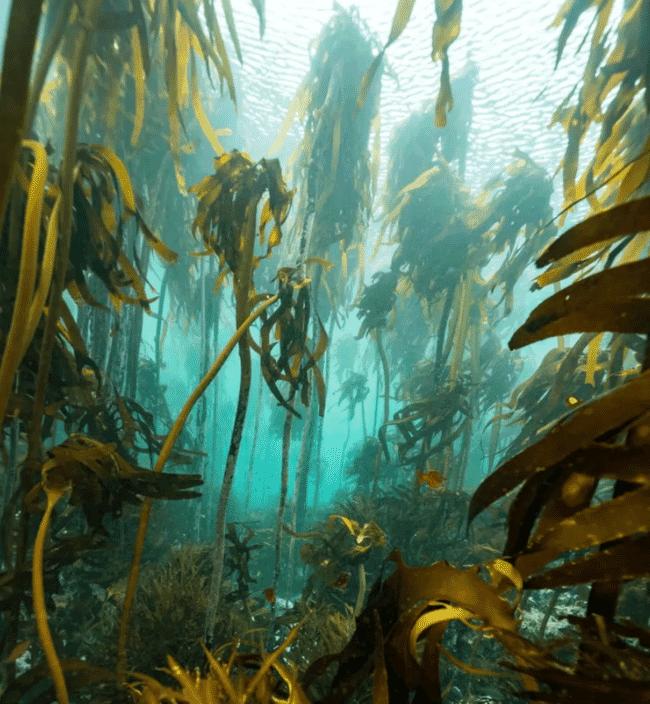
© Helen Walne
These seaweed forests face threats from marine heatwaves and climate change. But they may also hold part of the answer, with their ability to grow quickly and sequester carbon, according to Albert Pessarrodona Silvestre, Karen Filbee-Dexter and Thomas Wernberg from The University of Western Australia, in an article in The Conversation.
"Like other plants, seaweeds grow by capturing the Sun’s energy and carbon dioxide through photosynthesis. Just like trees these seaweeds offer habitat, food and shelter to a wide variety of marine organisms. Large species such as sea-bamboo and giant kelp have gas-filled structures that work like little balloons and help them create vast floating canopies. Other species rely on strong stems to stay upright and support their photosynthetic blades, while those like golden kelp, on Australia’s Great Southern Reef, drape over seafloor. Only a few of the world’s most productive forests, such as the Great African Seaforest (GASF) and the Great Southern Reef (GSR), have been recognised and named," they observe.
Seaweeds have long been known to be among the fastest growing plants on the planet, but it’s challenging to estimate how large an area they cover, as most satellites cannot take measurements at the depths where underwater forests are found.
To overcome this challenge, the researchers studied scientific literature, online repositories, local herbaria and citizen science initiatives and modelled the global distribution of ocean forests, finding they cover between 6 million and 7.2 million square kilometres, an area larger than the Amazon rainforest.
They then assessed how much these forests grow by going through hundreds of individual experimental studies from across the globe where seaweed growth rates had been measured by scuba divers.
They found that ocean forests are even more productive than many intensely farmed crops such as wheat, rice and corn. Productivity was highest in temperate regions, which are usually bathed in cool, nutrient-rich water. Every year, on average, ocean forests in these regions produce 2 to 11 times more biomass per area than these crops.
They argue that it’s possible to harness this immense productivity via seaweed farms that can supplement food production on land and boost sustainable development while also absorbing as much carbon as the Amazon.
However, they note that not all this carbon may end up sequestered, as this requires seaweed carbon to be locked away from the atmosphere for relatively long periods of time.
“First estimates suggest that a sizeable proportion of seaweed could be sequestered in sediments or the deep sea. But exactly how much seaweed carbon ends up sequestered naturally is an area of intense research,” they observe.
They also point out that ocean forests are facing very difficult conditions and large expanses have recently disappeared off Western Australia, eastern Canada and California, resulting in the loss of habitat and carbon sequestration potential.
Conversely, as sea ice melts and water temperatures warm, some Arctic regions are expected to see expansion of their ocean forests.
“These overlooked forests play a crucial, largely unseen role off our coasts. The majority of the world’s underwater forests are unrecognised, unexplored and uncharted. Without substantial efforts to improve our knowledge, it will not be possible to ensure their protection and conservation – let alone harness the full potential of the many opportunities they provide,” they reflect.




